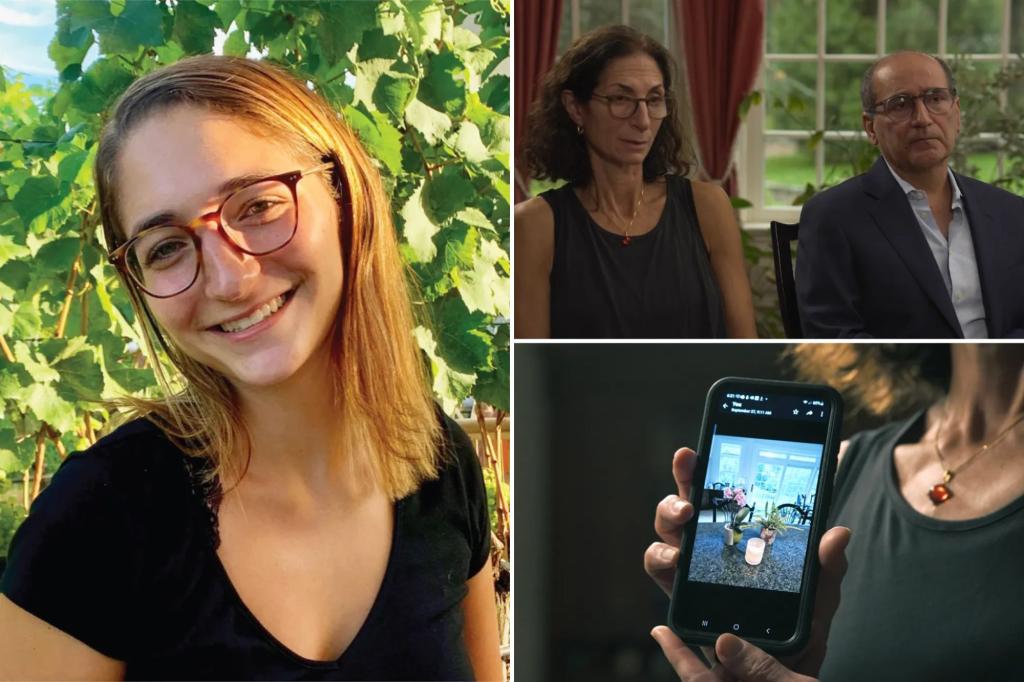Fentanyl is the poisoning of America


“It’s other people’s problem” is what I hear from many Americans when they consider the more than 100,000 drug deaths a year in this country.
When they see the scenes in Kensington, Philadelphia, that I described last week, it seems easy for some to pass it off as other people’s problem.
“Who doesn’t know that heroin is dangerous?” they think. “Of course your life is going to fall apart if you start taking tranq.”
Perhaps we should be thinking something different.
If this country is going to get serious about its epidemic of lost lives, perhaps we should think, “OK, maybe it won’t be you. But it could be someone you love. It could easily be someone you know.”
Many readers have told me in many messages over the last couple of weeks how closely the drug catastrophe has affected them. You don’t think it’s going to get close to you until it does.
That was certainly the case with Julia Ghahramani.
The 26-year old first-year lawyer was one of three young New York professionals who were killed in one night — March 18, 2021 — from fentanyl poisoning.
At that time COVID was still rumbling on — with all the isolation and working from home that it entailed.
And on that one night three professionals — Ross Mtangi, 40, from Credit Suisse and Amanda Scher, 36, a social worker, and Julia — all ordered cocaine from a New York dealer.
His name was Billy Ortega, a man in his early thirties who was just one of the numberless people who make their living selling drugs in this city.
Plenty of people will say that these young professionals should have known what they were doing.
Plenty of people will say that there’s nothing normal about ordering cocaine in New York City.
I’d suggest that plenty of people know the truth to be different.
Most people reading this will know at least someone who has at some point experimented with cocaine.
And though it may be a risk and maybe people should know better, few people who do coke in New York know that expect that fentanyl has made it a potential death sentence.
That was how it was that night.
The cocaine that Ortega sold was cut with fentanyl.
He had cut the drugs himself.
Fentanyl is much cheaper to acquire than cocaine.
And while some addicts are able to cope with small doses of fentanyl, even the tiniest amount — a speck on a single coin — is enough to kill anyone unused to it.
That was the effect that night.
Those who discovered the bodies said that it was as though they had been shot in the back of the head — such was the vast and sudden trauma to their system.
All were alone and had no one to revive them or give them a shot of the Narcan that all New Yorkers are now advised to carry around with us.
Ortega was caught, tried, convicted and sentenced to prison.
In the week after the sentencing, I went to the Ghahramani family house in leafy and prosperous Greenwich, Connecticut.
The feeling of a house in mourning is somehow always the same.
A silence.
An absence.
An unmendable grief.
As I sat with Julia’s parents it was clear that the grief was as fresh now as on the day they got the news.
How did they first hear?
Her mother, Lily Ann told me.
“We have a family chat — a WhatsApp chat. And we talk to each other all day long. And I noticed the day before that Julia kind of went silent. So that night, I kept calling her and calling her and she didn’t pick up.”
Julia’s father, Sassan, continued, “We jumped in the car and as we were driving — I don’t remember if it was a detective or the EMS said, ‘We’re sorry for your loss.’”
He started to break down.
“We pulled over and hugged each other, went back down into New York. We had no idea what it could possibly have been.”
When they got to their apartment they started to put together what had happened.
The cops realized what had happened at once.
They knew immediately that it was fentanyl poisoning.
On this occasion the police found it relatively easy to track down the person who had sold all three New Yorkers the fentanyl-laced cocaine.
The incriminating messages from his own phone showed that on the night of March 17th the dealer, Ortega, had called up another drug dealer.
He had not heard back from either of the three people he had already sold to that night and must have realized that things had gone badly wrong.
Dealers I have spoken to while researching fentanyl have told me that they wouldn’t cut such a strong drug into cocaine because the aim of a dealer is to get users hooked and to keep their custom.
But Ortega knew.
On the night that Ortega delivered his lethal drugs he told another dealer, “Hey man, I have a batch of stuff here that people say is too strong. Maybe you want it, but I’m going to take it and give it to some girls.”
At this point both of Julia’s parents quote the text message precisely.
Her mother, Lily Ann, says, “LOL. Give it to some girls. LOL.”
Breaking with emotion her father repeats it: “Give it to some girls, and see what happens. LOL.”
LOL?
That was how cheaply Ortega had viewed the life of their beloved daughter.
As a student Julia once wrote in her middle school yearbook: “My goal is to make the world a better place.”
She was dead at 26.
Her father Sassan showed me around the house which is adorned with photographs of his beautiful daughter with her siblings and parents.
He has made a great success of his life in America, as his daughter wanted to as well.
As he told me, “I’m in the financial community—we think of money all the time and all that. It’s just you need to take a step back and think about what the consequences of different things are. People come to the house and say, ‘This is a nice house,’ and all this. It means nothing.”
He chokes up again and begins to weep. “It means nothing for me. I’d give everything to have her back.”
I wonder what Julia’s mother would say to all those other young professionals in New York who do cocaine as her daughter once did.
She speaks tersely with the voice of awful, haunted experience.
“Don’t do it,” she says simply. “Don’t do it.”
Since 2010, overdoses involving stimulants like coke and fentanyl have increased 50-fold.
But interestingly when I use the term “overdose” to describe their daughter’s death, both parents resist the term.
Lily Ann quickly says, “We don’t call this an overdose because she did not overdose. Somebody poisoned her. So that language . . . This is not accurate.”
Sassan continues: “It’s poisoning. I think this is an important point for us. And when you bring up those statistics — the CDC numbers. We usually tend to refer to as overdoses. ‘Opioid epidemic,’ they called it. You know. They talk about prevention and drug abuse, and not one of them mentioned murder, homicide, poisoning. It was all about: oh, look how much people are using more drugs, and so we need to look at health remediation.”
The man who brought the lethal drugs to their daughter that night recently received a 30-year sentence.
But for Julia’s parents, that wasn’t enough.
“We’re stunned,” says her father. “This was a chance for the judge to deliver a strong message. [Ortega] was remorseless afterwards. He never apologized. So you can’t possibly find somebody more heinous and culpable than this man who himself cut up the drugs, put it in, and then what he did afterwards.”
It is a point that is too subtle for some people.
There is a difference between people knowingly ingesting a lethal substance and people ingesting a substance they don’t know to be lethal.
But the effects are the same.
The families I have met in Philadelphia grieve for their loved ones just as much as Julia’s parents.
All are suffering the costs of a lethal synthetic opioid which has washed its way through the drug supply in this country.
And for all the endless number of deaths there is an ever-growing, endless ocean of grief.
As Lily Ann tells me, “Every morning when I wake up, I come downstairs and I light a candle in honor of Julia. I take a picture of it and send it on a WhatsApp chat. When people look at their phones, they send their hearts.”







